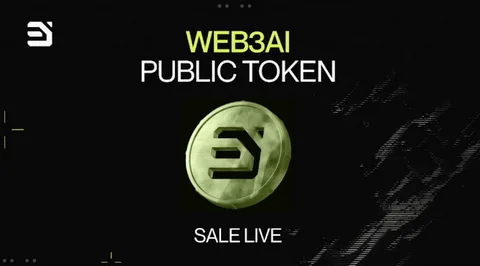Introduction
In recent years, Bitcoin has emerged as one of the most discussed assets in the financial world. Its volatility, potential for high returns, and the revolutionary technology underpinning it have captured the attention of investors, analysts, and economists alike. However, amidst all the hype and optimism, some voices stand out for their skepticism and caution.
One such prominent figure is Peter Schiff, a well-known economist and financial commentator. Schiff has issued a stark warning regarding Bitcoin, particularly focusing on the implications of Bitcoin’s supply-demand dynamics. This blog post will delve into Schiff’s concerns, analyze the supply-demand dynamics of Bitcoin, and explore the potential consequences for investors and the broader market.

Understanding Peter Schiff’s Warning
Peter Schiff, a staunch critic of Bitcoin, has consistently expressed his doubts about the cryptocurrency’s long-term viability. His warnings often center around the fundamental economics of Bitcoin, particularly its supply-demand dynamics. According to Schiff, while Bitcoin’s limited supply is often touted as a strength, it could actually pose significant risks.
Schiff’s Perspective on Bitcoin’s Limited Supply
Peter Schiff argues that Bitcoin’s fixed supply—capped at 21 million coins—creates an artificial scarcity that could lead to significant volatility. He suggests that this limited supply, combined with speculative demand, can drive up the price in the short term but also makes the asset prone to drastic fluctuations. Schiff’s warning highlights a critical issue: if demand for Bitcoin were to decline or if regulatory measures were introduced, the asset’s price could experience severe downturns due to its inelastic supply.
The Role of Speculation in Bitcoin’s Valuation
Schiff’s warning also addresses the role of speculation in Bitcoin’s market dynamics. Unlike traditional assets, Bitcoin’s valuation is heavily influenced by investor sentiment and speculative trading. When demand is high, the price can skyrocket, but when sentiment shifts, the value can plummet. Schiff argues that this speculative nature exacerbates the impact of Bitcoin’s supply-demand dynamics, making it a highly unstable investment.
Historical Context and Comparisons
To further understand Schiff’s warning, it is useful to compare Bitcoin’s supply-demand dynamics with traditional assets. For example, gold has a relatively stable supply and has been a store of value for centuries. Schiff, a proponent of gold, often contrasts Bitcoin’s volatility with gold’s steadiness.
He suggests that while Bitcoin’s limited supply may appear attractive, it lacks the historical stability and intrinsic value that gold possesses. This comparison underscores the potential risks Schiff sees in Bitcoin’s current market structure.
The Implications of Bitcoin’s Supply-Demand Dynamics
Understanding the implications of Bitcoin’s supply-demand dynamics is crucial for both investors and policymakers. Schiff’s warning serves as a cautionary tale about the potential risks associated with this cryptocurrency.
Market Volatility and Investment Risks
One of the primary implications of Bitcoin’s supply-demand dynamics is its extreme market volatility. Schiff’s warning emphasizes that Bitcoin’s fixed supply can lead to sharp price swings, driven by fluctuations in demand. For investors, this volatility translates to higher risk. While the potential for high returns exists, so does the possibility of significant losses. Investors need to be aware of these dynamics and consider them when making investment decisions.
Regulatory and Policy Implications
Schiff’s warning also touches on the potential regulatory and policy implications of Bitcoin’s supply-demand dynamics. As governments and financial regulators grapple with the rise of cryptocurrencies, they may implement measures that affect Bitcoin’s market. For instance, stricter regulations or outright bans could influence demand, leading to price drops. Moreover, any policy changes that impact the overall market sentiment towards cryptocurrencies could exacerbate Bitcoin’s volatility.
Long-Term Viability and Adoption
The long-term viability of Bitcoin is another critical consideration in light of Schiff’s warning. While Bitcoin has seen substantial growth and adoption, its future remains uncertain. The fixed supply and speculative nature of Bitcoin could pose challenges to its long-term stability and widespread acceptance. Schiff’s warning suggests that investors should be cautious about Bitcoin’s potential for long-term success, given its current supply-demand dynamics.
Alternative Investment Strategies
Given the risks highlighted by Schiff, investors may need to explore alternative strategies. Diversification, for instance, can help mitigate the risks associated with investing in volatile assets like Bitcoin. Additionally, considering other asset classes that offer stability and intrinsic value, such as gold or traditional equities, might be prudent. Schiff’s warning underscores the importance of a balanced investment approach, taking into account both the opportunities and risks presented by cryptocurrencies.
Conclusion
Peter Schiff’s warning about Bitcoin’s supply-demand dynamics serves as a crucial reminder for investors and market participants. While Bitcoin offers exciting possibilities and has captured significant interest, it is essential to recognize the risks associated with its limited supply and speculative nature. Schiff’s perspective highlights the need for careful consideration and risk management when engaging with this cryptocurrency.
As the cryptocurrency landscape continues to evolve, understanding the implications of Bitcoin’s supply-demand dynamics will be vital for making informed investment decisions.
We invite you to share your thoughts on Peter Schiff’s warning and how you perceive Bitcoin’s future in the comments below. Your insights and perspectives can contribute to a broader discussion on this complex and evolving topic.






